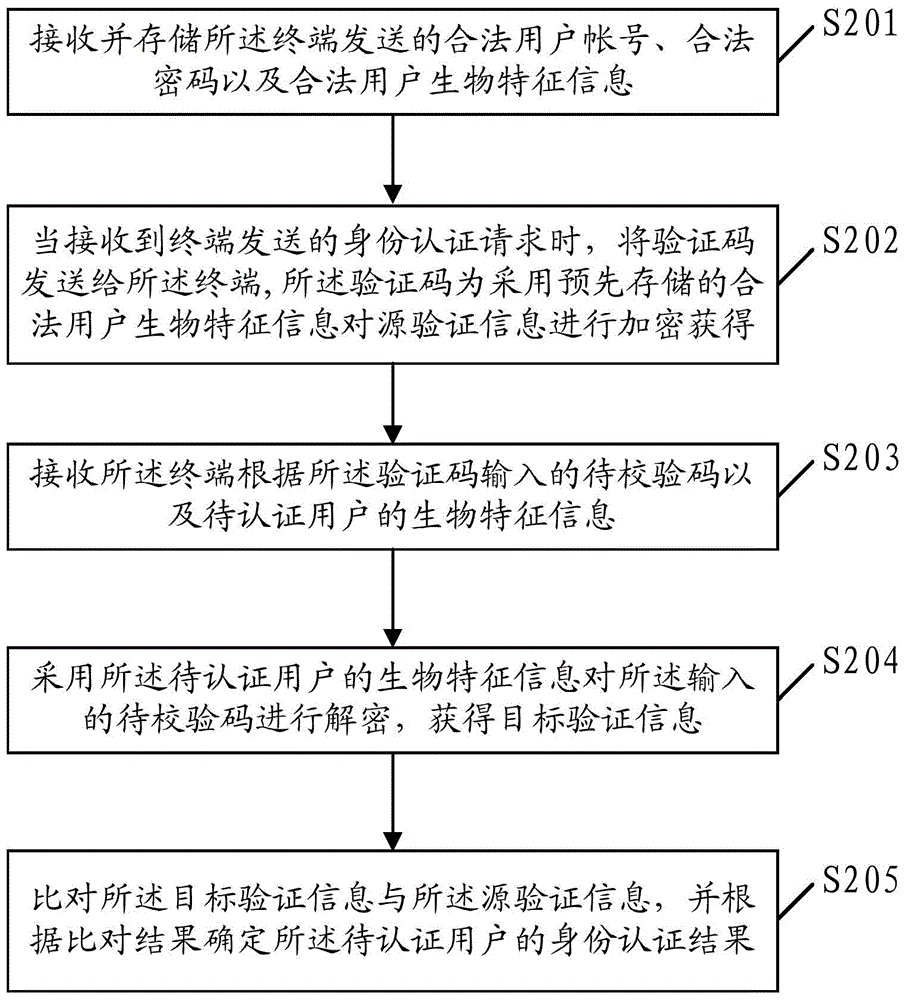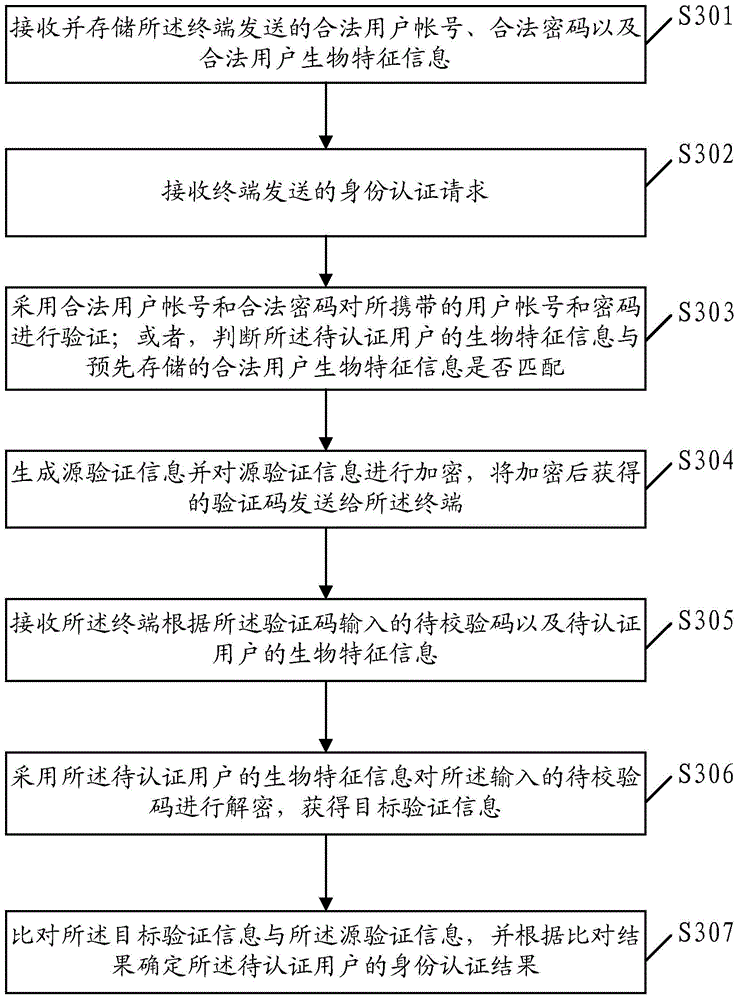Authentication method, server, and terminal
An authentication method and server technology, applied in the field of servers, terminals, and authentication methods, can solve problems such as low security, hidden dangers, and inability to confirm the real identity of users, and achieve the effect of improving security and eliminating hidden dangers.
- Summary
- Abstract
- Description
- Claims
- Application Information
AI Technical Summary
Problems solved by technology
Method used
Image
Examples
Embodiment Construction
[0042] The following will clearly and completely describe the technical solutions in the embodiments of the present invention with reference to the accompanying drawings in the embodiments of the present invention. Obviously, the described embodiments are only some, not all, embodiments of the present invention. Based on the embodiments of the present invention, all other embodiments obtained by persons of ordinary skill in the art without creative efforts fall within the protection scope of the present invention.
[0043] figure 1 It is a flow chart of the first embodiment of an authentication method provided by the embodiment of the present invention. In the embodiment of the present invention, the authentication method is applied to the server, and the server can be used to provide the identity authentication function. The user accesses the server through the network through the terminal, and completes operations such as transfer and payment through interaction with the ser...
PUM
 Login to View More
Login to View More Abstract
Description
Claims
Application Information
 Login to View More
Login to View More - R&D
- Intellectual Property
- Life Sciences
- Materials
- Tech Scout
- Unparalleled Data Quality
- Higher Quality Content
- 60% Fewer Hallucinations
Browse by: Latest US Patents, China's latest patents, Technical Efficacy Thesaurus, Application Domain, Technology Topic, Popular Technical Reports.
© 2025 PatSnap. All rights reserved.Legal|Privacy policy|Modern Slavery Act Transparency Statement|Sitemap|About US| Contact US: help@patsnap.com



